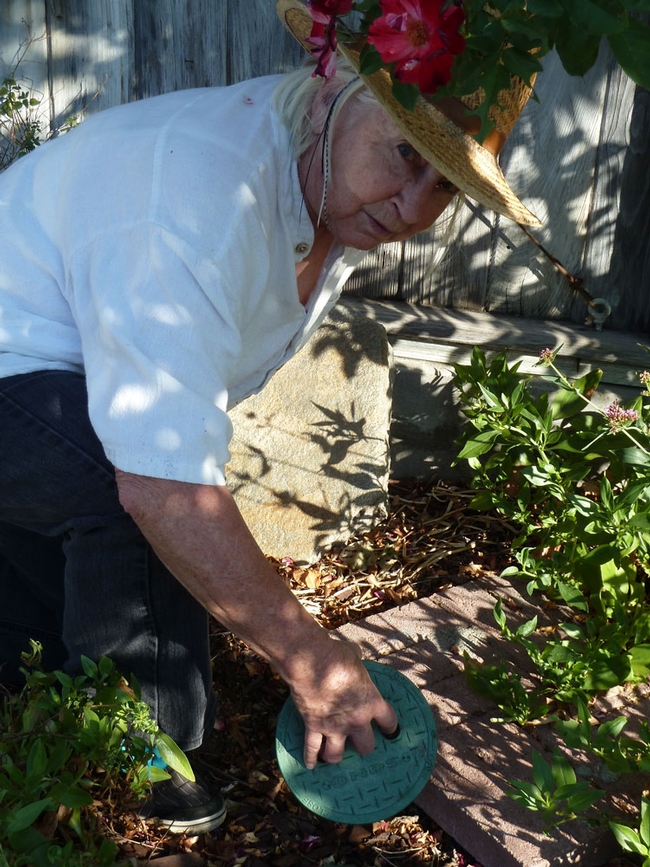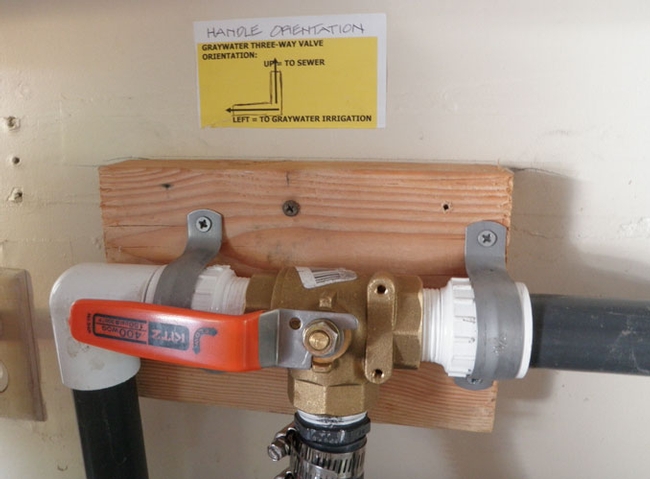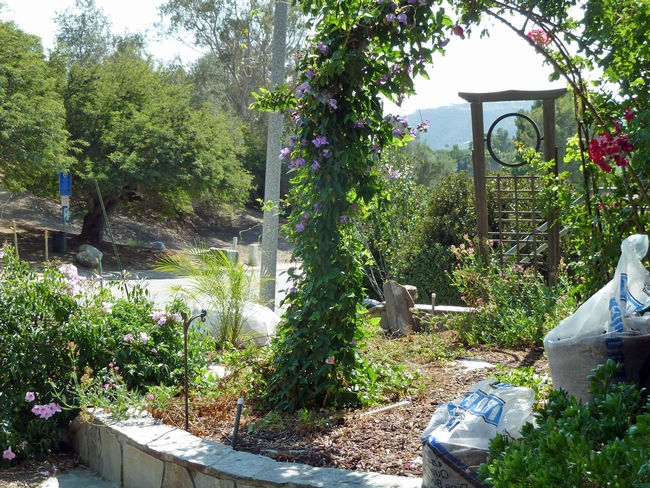Laundry-to-landscape graywater systems can keep plants alive in drought
UC Master Gardener Mary Steele has a trusty top-loading Maytag washer that was built before newer, water-saving models were on the market. Not wanting to dispose of her perfectly good washing machine, and concerned about conserving water, she decided to have a system installed to recycle laundry graywater for use in her Laguna Niguel front yard.
Steele, a UC Master Gardener in Orange County since 2000, brought in a contractor to install a valve behind her washing machine and flexible tubing to channel graywater to mulch pits in the front yard. The pits ensure that there is no graywater runoff or pooling on the property, important factors for using the recycled water. Steele found that the pits also work well for distributing fertilizer to her plants.
“I feel very positively about it,” Steele said. “One of my rose bushes, a climbing Fourth of July, is happier than it's ever been.”
With recent changes in state regulations, residents of single-family and two-family homes in most California communities may install simple laundry-to-landscape graywater systems without a permit, said Janet Hartin, UC Agriculture and Natural Resources (UC ANR) environmental horticulture advisor.
“On average, 10 to 25 gallons of water is generated per load in a front-loading washer and about 40 gallons per load from a top loader,” said Hartin, a horticulturist with UC ANR Cooperative Extension in San Bernardino, Los Angeles and Riverside counties. “A family of four running about eight loads of wash per week can keep three to six mature trees well irrigated just with laundry water.”
Hartin and co-author Ben Faber, a UC ANR Cooperative Extension advisor in Ventura County, recently published a 10-page guideline that details the basics of developing a laundry-to-landscape graywater use system in California. The publication, Use of Graywater in Urban Landscapes in California, can be downloaded for free from the UC ANR online publications catalog.
Hartin and Faber's publication focuses on washing machine water because, among the legal sources of graywater – including bathtubs, showers, bathroom washbasins and laundry tubs – regulations pertaining to its use have been eased at the state level. State health codes preclude the use of toilet discharge (‘black water') and wastewater from kitchen sinks or dishwashers in order to prevent the spread of pathogens in the landscape. Safe use of laundry graywater still requires precautions to maintain food safety and prevent pollution.
Hartin recommends laundry graywater users carefully select their laundry detergent to make sure it does not contain boron, phosphates or bleach.
“Choose liquid detergents over powders to avoid potentially high levels of sodium and fillers containing sodium which can have a negative impact on plants,” Hartin said. “Products such as Borax that contain boron can also prove toxic to plants. Although boron is required for plant growth, it is needed in very small amounts. Also, instead of using chlorine-containing bleach, use oxygenated bleaches like hydrogen peroxide.”
Laundering cloth diapers or other similarly soiled items should be done with the washing machine draining into the sewer, not the graywater system.
“The first concern should be making sure pathogens are not transferred onto humans or food for human consumption,” she said.
The recycled water can be used to irrigate trees, shrubs and flowers, but not root vegetables or in any capacity where it might touch edible leaves or fruit. To be on the safe side, Hartin recommends using potable water for all edible crops and using recycled graywater for ornamental plants.
An initiative to improve California water quality, quantity and security is part of the UC Division of Agriculture and Natural Resources Strategic Vision 2025.
Author: Jeannette E. Warnert





Posted by Susie Kocher on September 9, 2015 at 9:33 AM